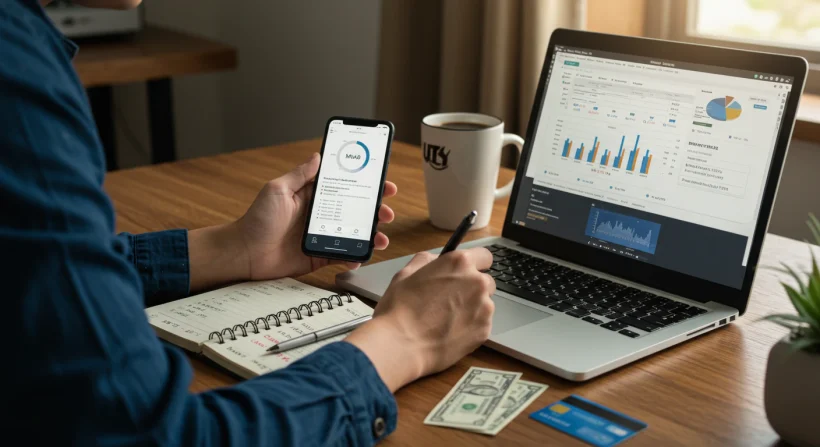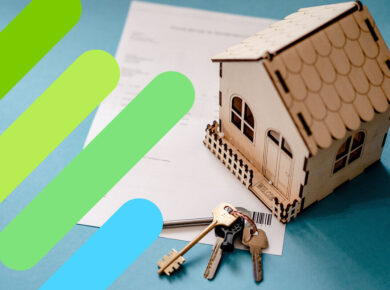Getting your first credit card marks an important milestone in your personal finance journey.
Getting your first credit card marks an important milestone in your personal finance journey. While that small piece of plastic offers convenience and purchasing power, it also comes with significant responsibilities. Making smart decisions from the beginning can set you up for financial success, helping you build positive credit history while avoiding common pitfalls that lead many first-time cardholders into debt. This comprehensive guide will walk you through essential steps to take after receiving your first credit card, ensuring you use this powerful financial tool to your advantage.
Table of Contents
- Understanding the Basics of Your New Credit Card
- 7 Smart Moves to Make Right After Getting Your First Card
- Common Mistakes to Avoid With Your First Credit Card
- When to Consider Your Second Credit Card
- Tools to Help Manage Your First Credit Card
- When to Seek Help With Credit Card Management
- Conclusion: Your Credit Card as a Financial Tool, Not a Trap
Understanding the Basics of Your New Credit Card
Before making any purchases, take time to thoroughly understand the features and terms of your new credit card. Familiarizing yourself with these basics will help you use your card responsibly and avoid unexpected costs.
Key Terms You Need to Know
- Annual Percentage Rate (APR): This is the yearly interest rate charged on balances you carry beyond the grace period. Credit cards for first-time users typically have APRs ranging from 15% to 25% or higher.
- Credit Limit: The maximum amount you can charge to your card. Most first credit cards start with limits between $300 and $2,000.
- Grace Period: The time between the end of your billing cycle and your payment due date. During this period (typically 21-25 days), you can pay your balance in full without incurring interest charges.
- Minimum Payment: The smallest amount you must pay by the due date to keep your account in good standing. This is usually about 2-3% of your balance.
- Annual Fee: A yearly charge for having the card. Many starter cards offer no annual fee options.
- Late Payment Fee: A penalty charged when you don’t make at least the minimum payment by the due date, typically $25-$40.
- Cash Advance: Borrowing cash against your credit limit, which typically incurs immediate interest (often at a higher rate) and additional fees.
Review your cardholder agreement carefully and save a copy for future reference. Many of these details may also be accessible through your online account or mobile app.
“The decisions you make with your first credit card can impact your financial options for years to come. Using credit wisely from the start helps build a foundation for future financial success.”
7 Smart Moves to Make Right After Getting Your First Card
Once you’ve received and activated your card, follow these important steps to establish healthy credit habits from the beginning:
1. Set Up Online Account Access
Register for online banking and download your card issuer’s mobile app. This gives you convenient 24/7 access to your account information, making it easier to:
- Check your current balance and available credit
- Review transactions in real-time
- Set up account alerts for purchases, payments due, and unusual activity
- Make payments quickly
Many credit card apps also offer spending analysis tools that categorize your purchases, helping you understand your spending patterns.
2. Establish Automatic Payments
Missing payments is one of the quickest ways to damage your credit score. Set up automatic payments to ensure you never miss a due date. You have two good options:
- Pay the full balance automatically: This is the ideal choice to avoid all interest charges. Link your checking account to pay the entire statement balance each month.
- Set up minimum payment as a safety net: If you’re concerned about having enough funds to cover the full amount, set up automatic minimum payments as a backup. This prevents late fees and negative credit reporting while you work to pay more manually.
Even with automatic payments established, regularly check your account to ensure payments are processing correctly.
3. Create a Personal Credit Card Policy
Before making your first purchase, establish clear personal rules for how you’ll use your card. Creating these boundaries helps prevent impulse decisions that can lead to debt. Consider including these guidelines:
- Only charge what you can pay off in full each month
- Keep your utilization below 30% of your credit limit
- Use your card only for specific categories (e.g., gas, groceries, subscriptions)
- Avoid using your card for non-essential purchases under a certain dollar amount
- Never use your card for cash advances
Write down these policies and keep them somewhere visible, like your wallet or as a note on your phone, to reinforce them whenever you’re tempted to stray.
4. Incorporate Your Card Into Your Budget
A credit card is not additional income; it’s simply a different payment method. Update your existing budget to accommodate credit card payments:
- Track credit card purchases in your budget categories just as you would cash or debit purchases
- Set aside money each paycheck for upcoming credit card payments
- Consider using budgeting apps like Mint, YNAB, or Personal Capital that can integrate with your credit card
- Review your credit card statement alongside your budget at the end of each month
This integration ensures your credit card spending aligns with your overall financial plan rather than existing as a separate financial world.
5. Start Building Your Credit Score Strategically
Your first credit card is a powerful tool for establishing a positive credit history. Focus on these factors that influence your credit score:
- Payment history (35% of your score): Always pay at least the minimum by the due date. On-time payments are the single most important factor for your credit score.
- Credit utilization (30% of your score): Keep your balance below 30% of your credit limit—even better if you can stay under 10%. For example, if your limit is $1,000, try not to carry a balance above $300.
- Length of credit history (15% of your score): This builds naturally over time. Avoid closing your first credit card account once it’s established, as this could shorten your credit history.
- Credit mix and new credit (10% each): These factors matter less initially but will become more important as you diversify your credit profile over time.
Consider making one small, recurring charge to your card each month (like a subscription service) and paying it off immediately to build payment history with minimal risk.
6. Set Up Credit Monitoring
Start monitoring your credit from day one. This helps you track your progress and identify any issues quickly:
- Use free services like Credit Karma or the Experian app to monitor your credit score
- Check if your credit card issuer offers free FICO score access (many do)
- Request your free annual credit reports from all three bureaus through AnnualCreditReport.com
- Set up fraud alerts to be notified of suspicious activity
Regular monitoring not only helps you track your credit-building progress but also alerts you to potential identity theft or reporting errors.
7. Understand and Leverage Your Card Benefits
Even starter credit cards often come with valuable benefits that many cardholders never use. Review your card’s features, which might include:
- Purchase protection or extended warranties
- Cell phone insurance (if you pay your phone bill with the card)
- Fraud protection and zero liability for unauthorized charges
- Cashback or rewards on certain purchase categories
- Free credit score updates
- Travel benefits like rental car insurance
Understanding these perks ensures you’re maximizing the value of your card beyond just building credit.
Common Mistakes to Avoid With Your First Credit Card
Being aware of these frequent first-time credit card mistakes can help you avoid financial setbacks:
Carrying a Balance and Paying Interest
The most expensive credit card mistake is carrying a balance month to month. At an average APR of 20%, a $1,000 balance would cost you about $200 per year in interest alone. Always aim to pay your statement balance in full.
Making Only Minimum Payments
Paying just the minimum stretches your debt over years and multiplies the cost of your purchases. For example, making minimum payments on a $3,000 balance could take over 10 years to pay off and cost an additional $3,000 in interest.
Using Your Credit Card for Cash Advances
Cash advances typically incur immediate interest (often at a higher rate), additional fees, and don’t include a grace period. Avoid them except in genuine emergencies.
Maxing Out Your Credit Limit
Using a high percentage of your available credit hurts your credit score and signals financial distress to lenders. It also leaves you without a safety net for genuine emergencies.
Applying for Multiple Cards Simultaneously
Each credit application creates a hard inquiry on your credit report, which can temporarily lower your score. Multiple applications in a short period suggest financial risk to lenders. Focus on using your first card responsibly before considering additional cards.
When to Consider Your Second Credit Card
While mastering your first credit card is the priority, there may come a time when adding a second card makes sense. Consider these milestones before applying:
- Time factor: You’ve responsibly used your first card for at least 12 months
- Payment history: You’ve consistently paid on time with no missed payments
- Balance management: You regularly pay your balance in full and maintain low utilization
- Credit score growth: Your score has improved by at least 50 points since opening your first card
- Stable income: Your financial situation is secure enough to manage multiple accounts
When you do apply for a second card, look for one that complements your first card by offering different benefits, such as rewards in spending categories your first card doesn’t cover.
Tools to Help Manage Your First Credit Card
These digital tools can help you stay on track with your credit card management:
- Budgeting apps: Apps like Mint, YNAB, or Personal Capital can integrate with your credit card account to categorize spending and help you stay within budget.
- Credit card issuer apps: Most major credit card companies offer robust mobile apps with spending analysis, payment reminders, and fraud alerts.
- Credit monitoring services: Credit Karma, Experian, or Credit Sesame offer free credit score monitoring to track your progress.
- Payment reminder apps: Calendar apps or dedicated reminder services can help ensure you never miss a payment date.
- Digital wallets: Services like Apple Pay or Google Pay can add a layer of security to your credit card transactions.
When to Seek Help With Credit Card Management
If you find yourself struggling with credit card management, don’t wait until you’re in a crisis to get help. Watch for these warning signs:
- You’re regularly unable to pay your full balance
- You’re using your credit card for everyday necessities because you’ve run out of cash
- You’re approaching your credit limit
- You feel anxious about checking your credit card balance
- You’re making purchases you know you can’t afford
Resources for help include:
- Your credit card issuer’s hardship program
- Nonprofit credit counseling services through the National Foundation for Credit Counseling
- Financial advisors who specialize in debt management
- Community financial education programs
Conclusion: Your Credit Card as a Financial Tool, Not a Trap
Your first credit card represents a significant step in your personal finance journey. Used wisely, it can be a powerful tool for building credit, managing expenses, and even earning rewards. The habits you establish with your first card often set the pattern for your financial future.
Remember that responsible credit card use is simple in principle: only charge what you can afford to pay off each month, pay your bill on time and in full, and maintain awareness of your spending and account status. These fundamental practices will help ensure your first credit card becomes an asset in your financial toolkit rather than a source of debt and stress.
By following the steps outlined in this guide, you’re setting yourself up for long-term financial success. Your credit card can open doors to future opportunities like favorable mortgage rates, auto loans, and premium financial products—but only if you demonstrate responsible management from day one.
Start building these positive habits now, and you’ll not only enjoy the convenience of your first credit card but also reap the benefits of strong credit for years to come.






